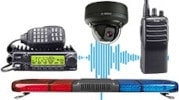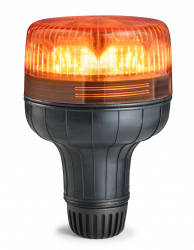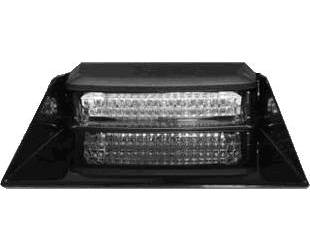- Special Offers
- Transceiver Radio
- Transceiver Accessory
- Antennas
- Antenna Accessory
- Cable
- Connector
- Installation Material
- Installation Tools
- Measuring Equipement
- Body Worn Camera
- Electrosmog
- Telephone
- Baby Monitor
- Fever Thermometer
- Radio Device
- Set-top Boxes
- Personal Protective Equipment
- Motorcycle Helmet Speaker
- Car Equipment
- Voltage Converter
- Dry Cell
- Battery
- Battery Charger
- Emergency Signal
- Amber Signal
- Amber LED Lightbar
- Amber Beacon
- Amber Perimeter Light
- Sound Signal
- Light and Sound Signal Accessory
- Traffic Engineering
- LED Lamp
- Smart Home
- Mosquito Repellent Device
- Market - Other Products
- Discontinued Products
Amber Signal
- further categoriesBy warning signal we mean amber light signal. There are no other colours in this category (pure white, green, purple). The warning signal does not include an acoustic signal, it consists only of a light signal. Vehicles flashing yellow should be approached, passed or overtaken with extreme caution.
In our amber signaling light product portfolio you can find SoundOff Signal, Code3, Premier Hazard, Sirena and Strobos brands. The amber flashers are available in the form of lightbars of different sizes. Yellow perimeter lights are typically mounted on a grille, door, rearview mirror or behind a windshield. Amber mobile lights are available with either a fixed, drill-in mounting or a magnetic base. Previous technologies, halogen and xenon bulbs have now been replaced almost without exception by LED technology which guarantees extremely reliable, long life and low consumption. Our products comply with R65 lighting parameters and R10 EMC compliance. You will find additional, extra services for almost all of our products, such as installation of devices in a vehicle, service or maintenance.
Use of yellow flashing lights
The IRM Regulation 12/2007 (13.III) distinguishes 2 user groups for yellow flashers. The first group is those who are entitled by virtue of the Regulation to use a warning sign, and the second group is those who are required to obtain a special authorisation from the authorities.
The authority has the right to revoke the authorisation to use the amber light if there is a change in the circumstances entitling the vehicle, in the facts giving rise to the entitlement or in the identity of the operator. If the holder does not use the amber light in accordance with the law, the police station will require the holder to dismantle the device.
The following activities may be carried out without a licence
Companies carrying out this main activity may apply for the registration of amber flashers by presenting the relevant part of the company certificate to the Motor Vehicle Officers at the Government Offices.
- a vehicle used for the construction, inspection, maintenance (repair) or cleaning of a road, road maintenance or public works,
- municipal waste, including vehicles transporting separately collected waste,
- vehicles and vehicle trailers exceeding the statutory length or width dimensions,
- agricultural machinery as defined in specific legislation
- a vehicle transporting radioactive material under an official authorisation, if its use is provided for in the authorisation
- a vehicle exceeding the length or width dimensions permitted by special legislation on account of its load, if its use is prescribed in the route licence,
- a vehicle of a transport authority carrying out a statutory control task
- the vehicle accompanying a vehicle exceeding the length or width prescribed by special legislation,
- a combination of an agricultural tractor or slow-moving vehicle and an agricultural tractor unit
- a vehicle used in the performance of a police service
- a vehicle of a civil frequency management authority used for radio monitoring, radio detection, radio surveillance, jamming and measurement services
- a vehicle of the police force used for the performance of its specific tasks, if the distinctive sign and the warning signal are combined
- lorries and tractors of category N3 operated by an undertaking engaged in the international carriage of goods by road
- a vehicle regularly used by the labour inspectorate and the labour authority to carry out statutory checks and inspections
- a vehicle specified by the motorway manager, if the differentiating sign and the warning sign are fitted together
- vehicles of an undertaking or person carrying out a personal protection or property surveillance activity
- vehicles of the Directorate-General for Public Procurement and Supply performing government logistics functions.
The yellow light may be used by persons carrying out the following activities, subject to special authorisation by the authorities
- regularly accompanying vehicles carrying radioactive material or vehicles exceeding the length or width limits laid down by special legislation
- regularly towing a broken-down vehicle or repairing a broken-down vehicle on the road,
- regularly used for the official removal of vehicles or for the application of wheel clamps
- regularly transporting money and valuables, whether in the context of the protection of persons and property or operated by a financial services organisation
- a vehicle operated under contract by an organisation carrying out the transport of security documents as defined in the Government Decree on the security document protection regime, and regularly carrying out the transport of security documents, if the purpose of the vehicle's operation justifies it.
Components of the warning
- Lightbar: Halogen or LED technology, fixed or magnetically mounted.
- Beacon: Typically a yellow roof light, either fixed or cigarette lighter operated.
- Perimeter lighting: Depending on the size of the vehicle, an additional amber light may be required for visibility of the warning signal, mounted in the engine cooling grille or door.
- Siren: A simple switch, less frequently a control, for switching amber lamps on and off, which is used, for example, to change the frequency and direction of the amber light flashing.
In the case of the installation of amber lamps, it must be ensured that the direction indicators are adequately visible from all sides of the vehicle and that a light bridge or roof-mounted indicator is fitted at the highest point of the vehicle.




